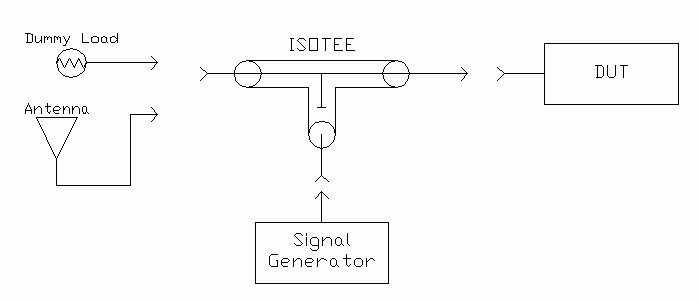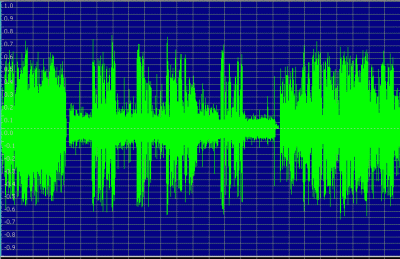Diagnose and fix repeater desensitization
To detect the amount of “desense”, that is, how many dB receiver sensitivity is degraded when connected to the antenna from its own or other transmitters, and trace the desense source, a signal generator with an “isotee” is used to generate a precise signal level with a dummy load and antenna. The test is accomplished in two parts–first determine sensitivity loss the system has by ambient antenna system noise.
- connect the dummy load, then note the SINAD level achieved for a given signal level (typically values of 10 to 15 dB would be used).
- the antenna system is connected, and the signal generator RF output level is raised until the SINAD reading matches that with the dummy load. The difference between the two signal generator level in dB represents the loss of sensitivity caused by ambient site noise.
- the test is repeated, but this time transmitting while measuring SINAD (if the device under test is a repeater or full-duplex device). The increase in signal generator level over that required to overcome ambient noise is the amount of desense created by the transmitter.
It desense is observed with only the dummy load, assuming the dummy load and test cables present a good impedance and are well shielded, then suspect the duplexer is mistuned, or there is a cabling/connection problem.
If no desense with the dummy load, then proceed to test the antenna system. If a rise on the antenna system only suspect bad connections or lightning protector that’s gone bad, or a bad antenna (cheap model or oxidized to create IM products).
Expected repeater dense measurements: ideally there would be no site noise (rather, site noise below the thermal noise floor set by cabling). This is usually not the case, especially for VHF. Expect to see some single digit dB degradation due to site noise on VHF, hopefully less than 3dB on UHF and above.

Isotee repeater desense connection
In terms of desense caused by the repeater, it should be below detectable levels. Only in cases where the so-called “flat-pack” notch-only duplexers should there be detectable levels of desense from the duplexer. With flat-packs it should be 1dB or less. If using band-pass/band-reject duplexers with quality RG-142 cable and N-connectors, there should be no desense to the 100 Watt+ output level.
An examples 450 MHz repeater desense measurement was the repeater desensing itself 6-10dB. The level varies and sometimes is up to 15dB. This may indicate an antenna system issue, either alone or in conjunction with a duplexer/connection issue–but a more precise diagnosis would need to be undertaken first.
In this audio clip hear how it’s somewhat difficult to hear with TX on, then easy to hear with TX off, and hard again with TX on.
